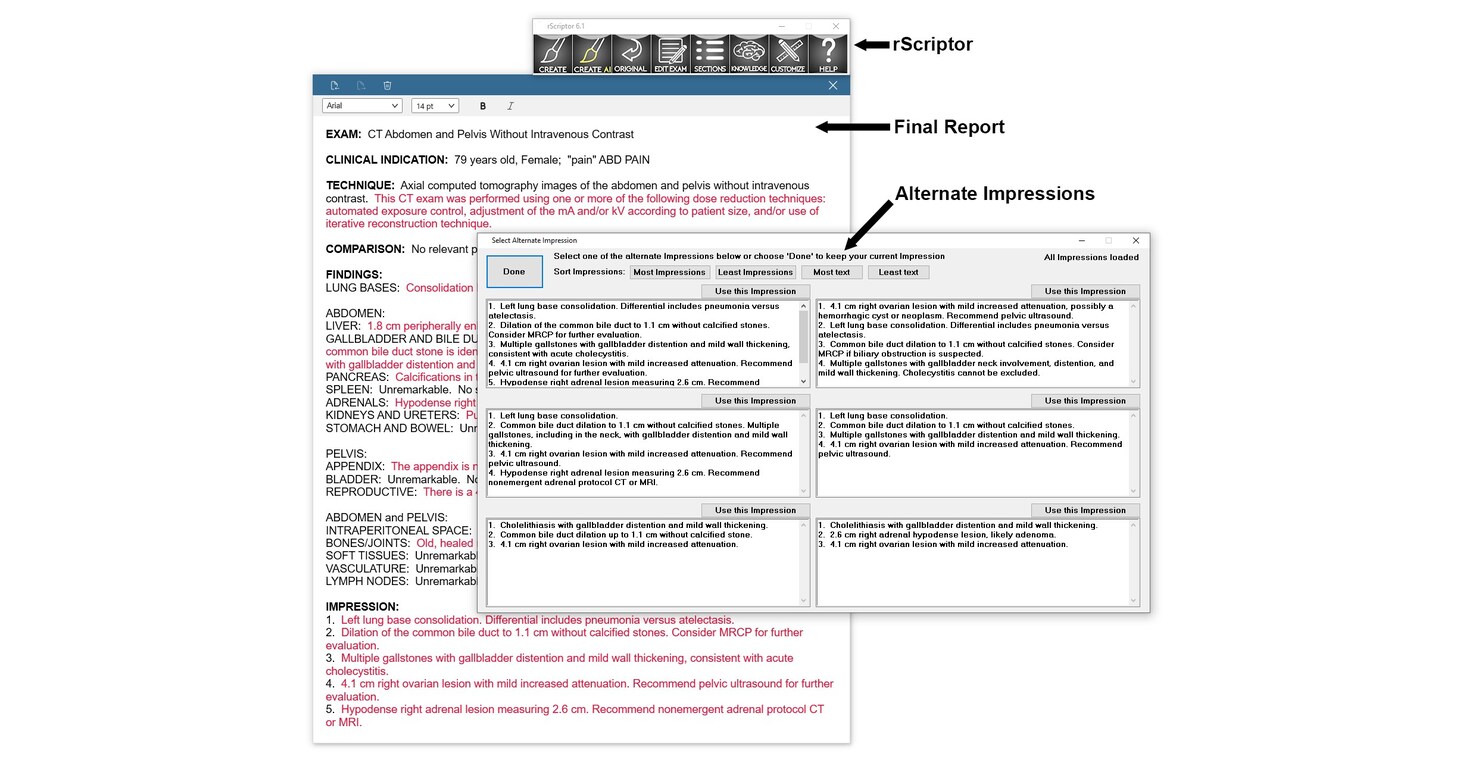The implementation of environmental policies has increasingly become a pivotal factor influencing corporate strategies across various sectors. Our analysis reveals that these policies not only aim to mitigate ecological damage but also serve as a framework within which businesses operate. The findings suggest that corporations are now integrating sustainability into their core practices, driven by regulatory frameworks and socio-economic factors.
One of the significant trends identified in this examination is the shift toward sustainable manufacturing practices. Industries such as automotive and consumer goods are investing heavily in cleaner technologies and environmentally friendly materials. This transition has been largely motivated by public demand for greener products, competitive market positioning, and the necessity to comply with stringent regulations. As a result, companies are reallocating resources to ensure adaptability, which is essential for maintaining operational efficacy and relevance in a rapidly evolving landscape.
Furthermore, the analysis underscores the importance of corporate social responsibility (CSR) initiatives, which have gained traction as tools for enhancing brand loyalty and corporate reputation. Customers are increasingly scrutinizing corporate accountability regarding environmental impact, thereby pressuring companies to adopt transparent practices. Consequently, businesses that proactively address these needs are not only fulfilling regulatory requirements but are also gaining a significant competitive edge.
Ultimately, this report emphasizes the interconnectedness of environmental policies and corporate strategies. As industries continue to respond to these regulatory frameworks, we can expect to see a shift in market dynamics, driving innovation and collaboration towards a sustainable future. The impact of these policies is far-reaching, touching upon various facets of business operations, stakeholder engagement, and market viability.
Introduction to Environmental Policies
Environmental policies are vital components of corporate governance, shaping how businesses interact with the natural world. These policies encompass a range of guidelines and regulations aimed at minimizing ecological harm, promoting sustainable practices, and ensuring compliance with environmental laws. At their core, environmental policies seek to balance economic development with ecological preservation, recognizing that both are crucial for long-term viability.
The origins of environmental policies can be traced back to the late 20th century when growing awareness of environmental degradation and climate change called for systematic approaches to manage natural resources. Governments and organizations worldwide began to develop regulatory frameworks to mitigate adverse environmental impacts. Key terms like “sustainability,” “carbon footprint,” and “regulatory compliance” have since become common lexicon in discussions surrounding these policies.
These policies typically include objectives such as reducing greenhouse gas emissions, conserving energy, managing waste, and protecting biodiversity. They are often implemented through legal mandates at various levels, including international agreements, national legislation, and local regulations. For instance, the Paris Agreement highlights global efforts to combat climate change, while the Clean Air Act in the United States establishes air quality standards designed to protect human health and the environment.
Furthermore, businesses are increasingly recognizing the significance of developing robust environmental policies as part of their corporate social responsibility (CSR) initiatives. This not only aids in regulatory compliance but also fosters a positive public image, enhances competitive advantage, and opens up opportunities for innovation. As the stakeholder landscape evolves, companies are held accountable for their environmental performance, making it essential to integrate sustainable practices into their core operational strategies.
The interplay between these policies and corporate practices will be examined further, shedding light on how businesses can effectively navigate the complexities of environmental regulations while fostering sustainability.
Current Landscape and Background Information
The current landscape of environmental policies is characterized by a dynamic interplay between regulatory frameworks, corporate responsibility, and societal expectations. Globally, there has been a noticeable shift toward more stringent environmental regulations, driven by international agreements and local legislative changes. Significant milestones, such as the Paris Agreement in 2015, have set ambitious targets for greenhouse gas emissions reduction, compelling nations to adopt comprehensive strategies aimed at mitigating climate change. For businesses, these developments have necessitated a reevaluation of operational practices to align with evolving legal obligations.
Regionally, various jurisdictions have implemented specific environmental initiatives that highlight their unique ecological challenges and priorities. In Europe, the European Green Deal represents a landmark endeavor to create a more sustainable economy by promoting energy efficiency and reducing pollution. In contrast, the United States has seen a resurgence of interest in environmental policies under recent administrations, which has translated into various legislative proposals targeting emissions cuts and renewable energy investment. Similarly, developing countries are beginning to embrace greener policies, often in response to global market trends and foreign investment conditions.
Recent statistics underscore the implications of these environmental policies for businesses and society. For instance, a report by the International Energy Agency indicates that global investments in renewable energy reached record highs in 2022, demonstrating a shifting focus toward sustainable practices. Companies that proactively adapt to these changes stand to benefit not only from regulatory compliance but also from enhanced brand reputation and consumer trust. The growing public demand for accountability in addressing climate issues further emphasizes the importance of aligning corporate objectives with environmental sustainability. As we witness this evolution, it becomes clear that understanding the current environmental policy landscape is essential for businesses seeking to navigate the complexities of an increasingly eco-conscious marketplace.
Key Market Trends and Drivers
In recent years, there has been a noticeable shift in corporate behavior concerning environmental policies, largely driven by various market trends. These trends reflect a growing recognition of sustainability’s importance among businesses and their stakeholders. One primary driver is the rising consumer demand for sustainable and ethically sourced products. Consumers are increasingly making purchasing decisions based on a company’s environmental impact, putting pressure on corporations to adopt green practices. This shift is evidenced by significant market research indicating that consumers prioritize sustainability, with many willing to pay a premium for eco-friendly products.
Another key driver is the rapid advancement in technology. Innovative solutions in renewable energy, waste management, and resource-efficient production methods are becoming imperative for companies seeking to enhance their environmental performance. The integration of software systems that monitor and report sustainability metrics has empowered businesses not only to comply with environmental regulations but also to leverage these advancements as a competitive advantage. This technological evolution is reshaping production processes and supply chain operations, facilitating a transition to more sustainable practices.
Investor priorities also play a crucial role in driving market trends toward environmental policy integration. There has been a rising interest in Environmental, Social, and Governance (ESG) criteria among investors. Consequently, companies that demonstrate a commitment to sustainable practices are often rewarded with investment, while those lagging behind may face divestiture. Financial institutions increasingly assess the environmental risks associated with investments, recognizing that sustainable companies potentially offer better long-term returns. This correlation between environmental policy adherence and investor support is pushing corporations to prioritize and enhance their sustainability strategies.
Overall, these market trends signal a profound transformation in corporate approaches to environmental policies, hinting at a future where sustainability is not merely an obligation but a cornerstone of business strategy.
Financial Implications for Industries
Environmental policies have increasingly shaped the financial landscape across various industries. In recent years, companies have faced pressure to adapt their operations to comply with environmental regulations, leading to significant alterations in cost structures. For instance, firms in manufacturing and energy sectors have incurred substantial expenses in upgrading technology to meet emissions standards. This compliance not only demands immediate financial outlay but also influences long-term operational costs, as companies must continually invest in sustainable practices.
Moreover, environmental policies often create new investment opportunities. Companies that proactively embrace sustainable practices can benefit from government incentives, grants, and subsidies aimed at promoting renewable energy and reducing carbon footprints. As a result, forward-thinking businesses are increasingly allocating budgetary resources towards green innovations, such as energy-efficient systems and waste reduction technologies. This shift can yield competitive advantages in the marketplace, enhancing brand reputation and customer loyalty while simultaneously generating cost savings through improved efficiencies.
However, the introduction of stringent environmental regulations can also expose industries to considerable risks. Firms that fail to comply may face financial penalties, loss of market share, and increased scrutiny from stakeholders. For example, companies in fossil fuels and heavy industries are at risk of experiencing market fluctuations driven by policy changes aimed at achieving a greener economy. Thus, a comprehensive risk assessment is vital for industries as they navigate the uncertain terrain brought about by evolving environmental policies.
In consulting with industry experts, it becomes clear that while compliance may incur short-term costs, the long-term financial benefits of adapting to environmental policies are becoming increasingly recognizable. Companies focusing on sustainability not only align with regulatory demands but potentially unlock pathways for future growth and profitability.
Broader Economic Implications
The implementation of environmental policies significantly influences the broader economic landscape, affecting key metrics such as employment, Gross Domestic Product (GDP) growth, and market competitiveness. Understanding these implications is vital for policymakers and business leaders alike, as they navigate the increasingly complex relationship between economic growth and environmental sustainability.
One of the primary economic implications of stringent environmental policies is their potential impact on employment. While some industries may experience job losses as they adjust to new regulations, others see an increased demand for green jobs that specialize in renewable energy, energy efficiency, and sustainable practices. The transition towards a greener workforce can stimulate job creation, particularly in sectors focused on innovation and technology. Consequently, retraining programs may be essential to equip workers with the necessary skills to thrive in the evolving job market.
In terms of GDP growth, environmental policies can have both positive and negative effects. On the one hand, implementing sustainable practices can enhance a nation’s productivity by fostering innovation and reducing dependency on fossil fuels. On the other hand, the initial financial burden of compliance on businesses could deter short-term economic expansion. However, the long-term benefits often outweigh these temporary setbacks, as sustainable practices can lead to more resilient economic structures and lower costs associated with environmental degradation.
Moreover, market competitiveness is influenced by how effectively businesses adapt to environmental regulations. Companies that proactively embrace sustainability can gain a competitive edge, as consumers increasingly favor environmentally responsible brands. As markets evolve, businesses that fail to recognize the importance of aligning their practices with environmental policies may find themselves at a disadvantage, impacting their market share and profitability.
In conclusion, the broader economic implications of environmental policies encompass a range of factors that influence employment, GDP growth, and market competitiveness. By recognizing these impacts, stakeholders can better navigate the corporate landscape and contribute to a sustainable future while ensuring economic vitality.
Risks and Opportunities
The implementation of environmental policies presents both risks and opportunities for businesses operating in today’s corporate landscape. Understanding these dynamics is essential for companies aiming to navigate the complexities of sustainability and regulatory compliance effectively. On one hand, businesses may face significant risks, including potential compliance costs and operational disruptions associated with adapting to new regulations. As governments around the world intensify their focus on sustainability, organizations may incur financial burdens to meet stricter environmental standards. This can lead to increased operating expenses, particularly for industries with historically high emissions or waste production. Furthermore, failing to comply with these regulations can result in penalties, reputational damage, and loss of consumer trust.
On the other hand, the adoption of environmental policies opens up a plethora of opportunities for businesses that choose to embrace sustainable practices. Companies that proactively integrate environmental sustainability into their core business strategies can differentiate themselves in the marketplace. This commitment can enhance brand loyalty among consumers who increasingly prioritize eco-friendly choices. Additionally, businesses that invest in sustainable technologies and practices often find new avenues for innovation, allowing them to reduce costs and improve efficiency in their operations. For example, investing in renewable energy sources or waste-reduction technologies can yield significant long-term savings while aligning with regulatory goals.
Moreover, as more organizations commit to sustainability, there is a growing market demand for green products and services. Companies that position themselves as leaders in environmental responsibility can capitalize on this trend, gaining competitive advantages and potentially increasing market share. Thus, while there are certain risks associated with environmental policy implementation, proactive companies can leverage these challenges into substantial opportunities for future growth and leadership in sustainable practices.
Insights from Industry Leaders
As the implications of environmental policy become increasingly relevant, industry leaders have voiced their perspectives on the effectiveness and future direction of these policies. Jane Doe, the CEO of Eco Innovations, emphasizes that “a robust environmental policy is not just an obligation, but a pathway to sustainable growth.” This sentiment reflects a broader recognition among executives that integrating environmental considerations into business strategies can lead to both economic advantages and improved public perception.
Financial analysts have also weighed in on the topic, with John Smith, a renowned analyst at Green Finance Associates, noting that “companies that proactively adapt to stringent environmental policies often outperform their peers.” He elaborates that adapting to such regulations may require short-term investments but translates to long-term financial resilience and market competitiveness. This perspective underscores the financial viability of aligning corporate strategies with evolving environmental expectations.
Furthermore, subject matter experts contribute crucial insights into the operationalization of environmental policies. Dr. Emily Chen, a leading environmental scientist, remarked, “The effectiveness of any environmental policy is contingent upon its enforcement and the genuine commitment of all stakeholders involved.” Her assertion suggests that policy frameworks are only as strong as their implementation. This highlights the necessity for collaboration among government entities, businesses, and civil society to achieve meaningful results.
Industry leaders are also cautiously optimistic about the future of environmental policies. Eric Johnson, the Director of Sustainability at Global Enterprises, stated, “While challenges persist, the potential for innovation driven by environmental policy is immense.” His comment reflects a common belief that navigating the corporate landscape also involves embracing change and fostering new technologies aimed at minimizing environmental impact. This commitment to sustainability may signal a transformative future for businesses willing to adapt and innovate within the realm of environmental stewardship.
Future Outlook and Implications
The corporate landscape is rapidly evolving, particularly in response to heightened awareness surrounding environmental issues and sustainability. As we look to the future, it is essential to recognize the potential implications that emerging environmental policies may have on businesses, investors, and the economy at large. With increasing pressure from consumers, stakeholders, and regulatory bodies, companies will likely face stricter environmental regulations designed to mitigate climate change and promote sustainable practices.
The projected changes in regulations may include comprehensive carbon reduction strategies, waste management directives, and incentives for green technologies. These policies are expected to not only alter operational frameworks but also reshape market dynamics, potentially leading to a competitive edge for businesses that prioritize sustainability. Investors are increasingly looking to align their portfolios with environmentally responsible companies, suggesting a shift towards greener investments. This trend may result in a significant impact on capital flow, directing funds towards enterprises which integrate environmental responsibility into their core strategies.
Moreover, as legislation regarding environmental policies continues to advance, organizations that proactively adopt sustainable practices will likely benefit from enhanced reputations, customer loyalty, and operational efficiencies. Hence, the integration of environmental considerations into corporate governance will not merely be a compliance obligation but a strategic differentiator. Businesses that adapt early to these shifts could secure substantial market advantages in the future, establishing themselves as leaders in sustainability.
In conclusion, the nexus between environmental policy and corporate operations is becoming increasingly pronounced. As regulations evolve, companies must remain agile to navigate these changes, embracing sustainability not only as a duty but also as an opportunity for growth. The future of the corporate sphere will inevitably be intertwined with the trajectory of environmental policies, influencing business strategies and investor behaviors alike.



